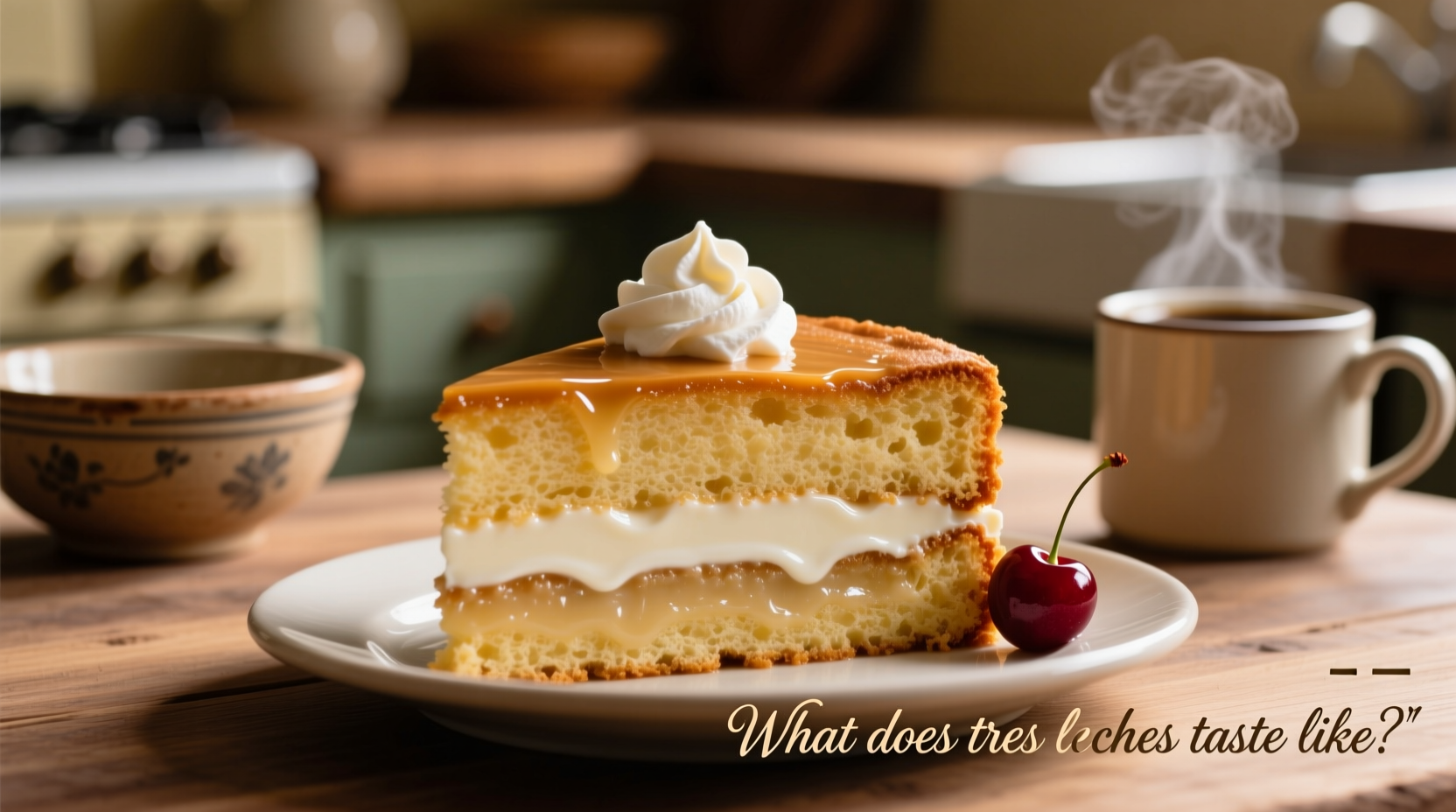Curious about this beloved Latin American dessert? Whether you're considering ordering it at a restaurant, baking it for a special occasion, or simply wondering what all the fuss is about, understanding tres leches' distinctive taste profile helps set proper expectations for this iconic treat.
The Core Flavor Experience of Tres Leches
When you take your first bite of authentic tres leches cake, you'll immediately notice its extraordinary moisture level. Unlike traditional cakes that can sometimes be dry, tres leches offers a pudding-like consistency while maintaining the structure of sponge cake. The three-milk mixture creates a complex sweetness that's rich without being cloying.
The condensed milk provides that signature caramel-like sweetness, while evaporated milk adds body and subtle cooked-milk notes. Heavy cream contributes freshness and a smooth mouthfeel that balances the sweetness. High-quality versions often include a hint of cinnamon or vanilla that enhances rather than overwhelms the dairy flavors.
| Milk Component | Flavor Contribution | Texture Impact |
|---|---|---|
| Condensed Milk | Caramelized sweetness, rich depth | Thick, syrupy consistency |
| Evaporated Milk | Cooked milk notes, subtle richness | Smooth, creamy body |
| Heavy Cream | Fresh dairy flavor, light sweetness | Velvety mouthfeel, balances sweetness |
How Tres Leches Compares to Similar Desserts
Many people wonder how tres leches differs from other milk-soaked cakes. While similar to Portuguese leche frita or Italian sformato, tres leches stands apart through its specific milk combination and preparation method. Unlike bread pudding which features egg-based custard, tres leches relies solely on the three-milk mixture for its signature flavor.
According to culinary historians at the Smithsonian's food history program, tres leches emerged in mid-20th century Latin America as evaporated and condensed milk became widely available. The dessert's popularity spread rapidly across Mexico, Nicaragua, and Cuba, with each region developing distinctive variations while maintaining the essential three-milk foundation. Smithsonian Institution documents how this dessert represents an interesting fusion of European baking techniques with Latin American ingredients.
Regional Variations That Affect Flavor
While the basic tres leches formula remains consistent, regional differences significantly impact the final taste experience:
- Mexican style often includes a touch of cinnamon in the milk mixture and sometimes rum, creating warmer, spiced notes
- Nicaraguan version typically uses a higher proportion of condensed milk for intensified sweetness
- Cuban interpretation frequently incorporates fruit flavors like guava or passion fruit
- Caribbean variations sometimes add coconut milk to one of the three milks
These regional adaptations demonstrate how tres leches has evolved while maintaining its essential character. Food anthropologists note that the dessert's adaptability across Latin America reflects broader cultural patterns of culinary innovation within shared traditions. As documented by the National Geographic Food section, tres leches represents a perfect example of how practical food preservation techniques (using shelf-stable milks) evolved into beloved cultural traditions.
Texture: The Secret to Authentic Tres Leches
Many first-time tres leches eaters are surprised by its distinctive texture. The cake shouldn't be soggy or falling apart, but rather uniformly moist throughout with a delicate crumb that holds together when sliced. The ideal texture resembles a cross between sponge cake and custard.
Professional bakers emphasize that proper aeration of the sponge cake base is crucial—too dense and it won't absorb the milk mixture properly; too airy and it becomes waterlogged. The cake needs 4-12 hours to fully absorb the three milks, allowing flavors to meld and creating that signature unified texture where you can't distinguish between cake and milk mixture.
Common Misconceptions About Tres Leches Flavor
Several misconceptions often lead to disappointment when trying tres leches for the first time:
- It's overly sweet—While sweet, properly made tres leches balances sweetness with dairy richness
- It tastes like plain milk—The three milks create complex flavor notes beyond simple dairy
- All versions taste the same—Regional variations create significantly different experiences
- It should be served warm—Authentic tres leches is always served chilled
Understanding these distinctions helps set proper expectations for what makes tres leches uniquely delicious rather than just "milk-soaked cake."
Perfect Pairings for Tres Leches Cake
Certain beverages and accompaniments enhance tres leches' flavor profile:
- Coffee—Espresso or strong coffee cuts through the sweetness
- Dessert wines—A light Moscato complements without overwhelming
- Fruit—Fresh berries provide acidity that balances richness
- Spiced teas—Chamomile or cinnamon tea enhances warm notes
When served at authentic Latin American celebrations, tres leches often appears alongside traditional beverages like café de olla (spiced Mexican coffee) which creates a harmonious flavor experience documented in culinary anthropology studies of regional food pairings.
What Affects Tres Leches Taste Quality?
Several factors determine whether tres leches delivers its signature flavor experience:
- Milk quality—Fresh, high-fat dairy produces superior results
- Soaking time—Insufficient time yields dry spots; too long creates sogginess
- Cake texture—Properly baked sponge is essential for even absorption
- Temperature—Chilled serving temperature enhances flavor perception
Professional chefs note that the dessert's simplicity makes ingredient quality paramount—substandard milks or improper technique results in a dessert that's either too sweet or lacks the characteristic balance that defines authentic tres leches. The Cooking Light culinary research team emphasizes that traditional preparation methods directly impact the final flavor chemistry of the dessert.











 浙公网安备
33010002000092号
浙公网安备
33010002000092号 浙B2-20120091-4
浙B2-20120091-4